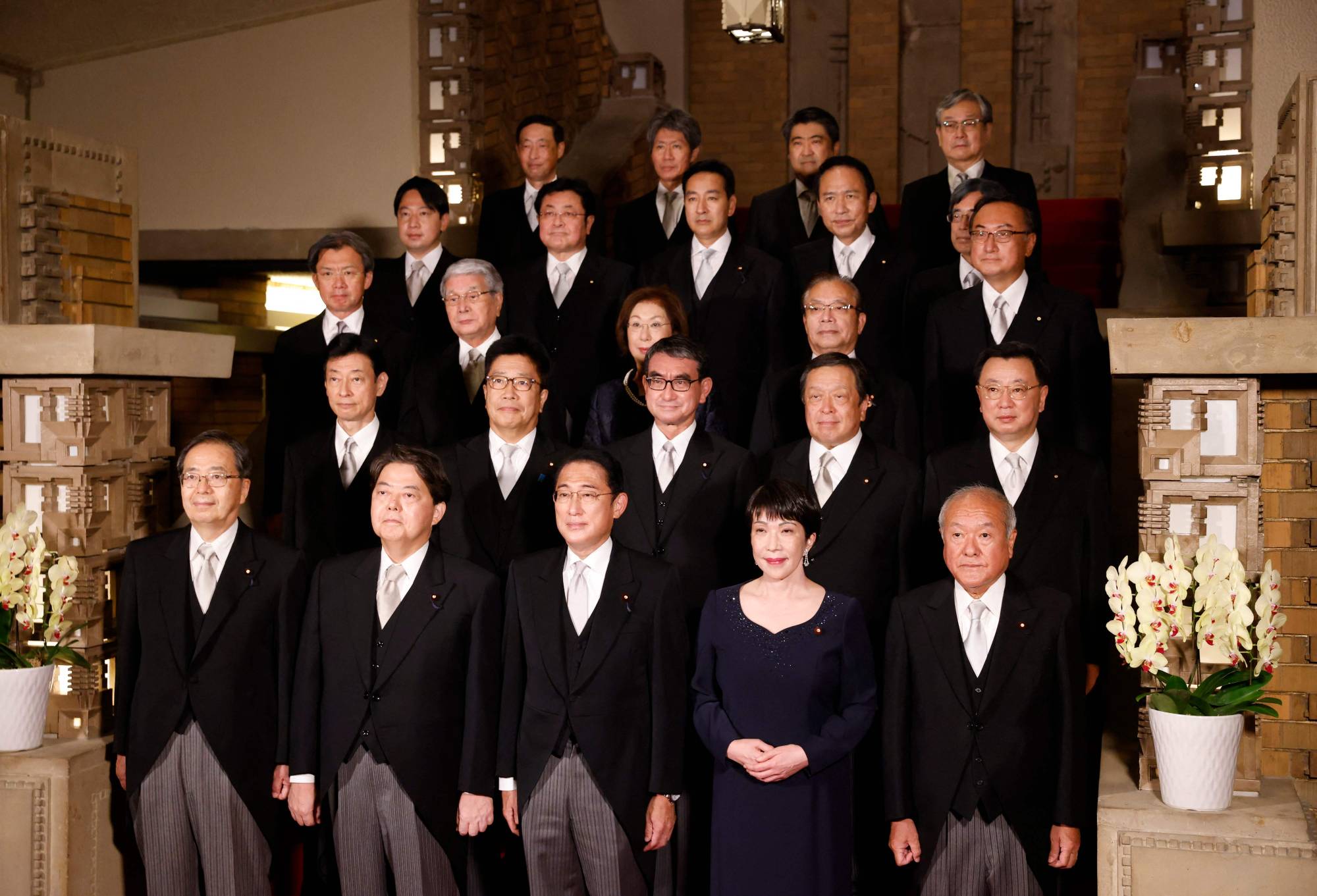Faced with sagging approval ratings, surging tensions with China and controversy over lawmakers' links to the Unification Church, Prime Minister Fumio Kishida opted Wednesday for experience and stability as he shuffled key ministers for the first time in his tenure.
Onetime Defense Minister Yasukazu Hamada has again taken over that portfolio, reprising a role he filled from 2008 to 2009, while the position of economic security minister has been handed to former LDP policy chief Sanae Takaichi, a disciple of slain former Prime Minister Shinzo Abe and a former rival to Kishida for the party presidency.
Takaichi is one of just two women to make up the 20-member Cabinet, which includes the prime minister. Known as being a hawk on military matters and particularly tough on China-related issues, she was Abe’s pick for the LDP top job. However, without the backing of a major faction, she lacked the intraparty support to become its leader and, by extension, the country’s first female prime minister.
















With your current subscription plan you can comment on stories. However, before writing your first comment, please create a display name in the Profile section of your subscriber account page.